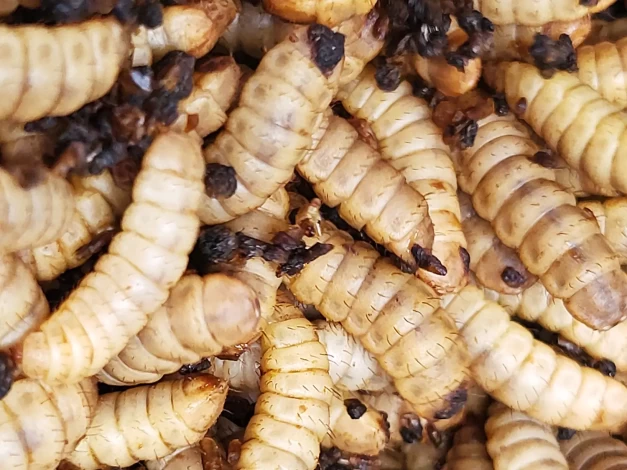
Authors
used cell-based in vitro assays to compare the immunogenic and
anti-inflammatory capacity of whole and expeller-pressed black soldier fly
organic insect meals to fishmeal, cricket powder and quercetin (a plant-derived
anti-inflammatory). This is 14-day-old larvae. Photo: Collected
The use of insect meal, mainly derived from larvae of black
soldier fly (BSF, Hermetia illucens) as an aquafeed ingredient is under
investigation while being increasingly adopted by the aquafeed industry. Most
research has focused on the potential of insect meal as an alternative protein
ingredient for several fish species – including rainbow trout, salmon, carp,
sea bass and catfish – while only a few studies have investigated the immunological
benefits of insect meal.
Here we present the results of a project aimed at
investigating the in vitro immunogenic (or pro-inflammatory) and
anti-inflammatory capacity of BSF organic black soldier fly meal compared to
other commercially available ingredients.
Study setup/Ingredients
tested
Descriptions of the ingredients investigated throughout this
project are included in Table 1. All samples were dissolved in water, mixed at
room temperature for one hour, and centrifuged to separate soluble
(supernatant) from insoluble (pellet) material. The supernatant, containing
soluble components, was 0.22 µm filtered and stored at minus-20 degrees-C until
needed for cell assays.
Cell-based assays
The RAW264.7 mouse macrophage cell line was grown in vitro
to produce nitric oxide (NO), a signaling molecule that plays a vital role in
the pathogenesis of inflammation. Stimulation of NO production represents
immunogenic or pro-inflammatory responses while decreased NO production
suggests anti-inflammatory activity. RAW264.7 mouse macrophage cells were grown
to produce two different cell-based assays.
Immunogenic
(pro-inflammatory) capacity in vitro
To stimulate the production of NO and observe any
immunogenic (or pro-inflammatory) responses, cells were treated with bacterial
lipopolysaccharide (LPS) or the test ingredients. To ensure that any treatment
effect was not related to toxicity (that could result in false positives), cell
viability was measured in the assay in response to all project samples and
ranged from 106–124 percent (expressed as a percentage compared to untreated
cells).
The following methodology was followed:
Comment Now